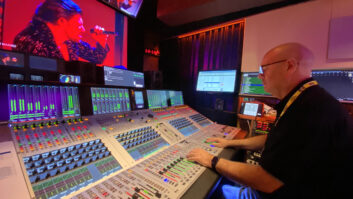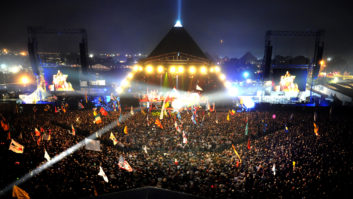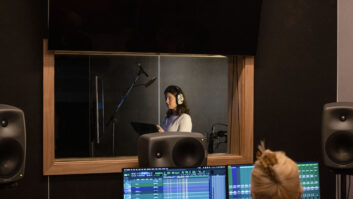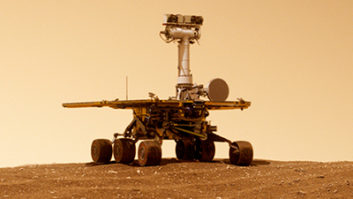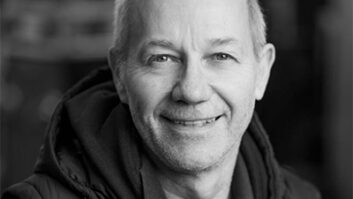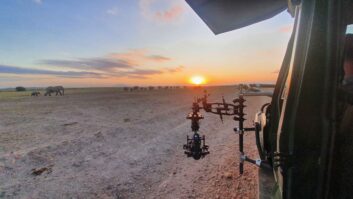Three-time Oscar nominated supervising sound editor Mark Stoeckinger worked with director David Leitch on summer blockbuster, Bullet Train.
He talks to TVBEurope about his role on the project, the challenge of creating the sound of a moving train on a sound stage, and giving each car the own sonic signature.
Can you give us a little background on your career in the film and TV industry?
I’ve been working in film since the early 1980s. After graduating from the USC film school in 1982 I pursued a career in post production and eventually sound because throughout my time in school I became fascinated with what sound provided to the overall story telling experience. The symbiotic relationship of visual and sonic pacing was just fun and rewarding to be a part of. Maybe my time as a kid recording people’s stories on 1/4” tape unintentionally helped me develop my ear towards listening to the world around me.
How did you get involved in Bullet Train?
Since the first John Wick I have had the pleasure of working on the films David Leitch has both produced and directed so was fortunate to continue on that journey with Bullet Train.
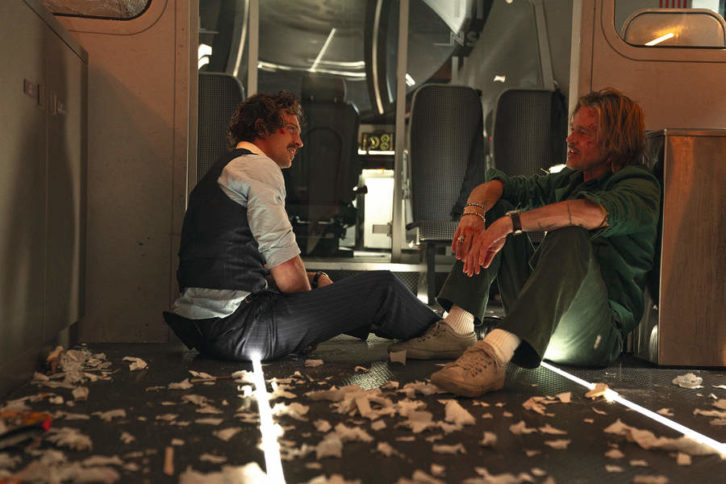
What exactly is the role of supervising sound editor?
There are some differences in what the job of supervising sound editor is from film to film or how the filmmakers wants to utilise that person on a given production. For me the role tends to be that of a creative content provider and organiser of all things sound minus the music. That doesn’t mean my role is exclusive at all to creative content by any means or even organisation but that is the general capacity I work in.
In my job I need to understand the story, the style of the film, what the director and picture editor are after creatively, be able to offer up my own creative input and ideas yet at the same time listen, as I guess I did on those old 1/4” tapes, and make it all happen on time, on schedule and on budget. I can be one of the architects and general contractors of the post sound process by hiring, managing and collaborating with a creative team of sound effects creators, foley artists, ADR and the meticulous editing of the production dialogue tracks. I will start the film by recording, making and editing as much of the additive and creative sound as possible sending it to the picture editor to include in the cut and play for the director. Then as the schedule accelerates and the workload exponential-ises I tend to transition to an overview supervisor mode before bringing all these sounds and ideas to the re-recording mixers to sculpt a beautiful, clear and articulate sound track with all the materials. They will also add their creative input at this time.
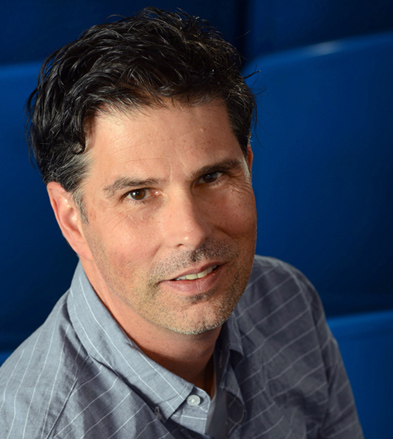
How do you create the sound of the constantly moving train?
The most challenging sound scape in Bullet Train was the sound of the train itself. I’ve never ridden on a bullet train even though I did have the opportunity many years ago in Japan to record some bullet trains going by at speed (which I was able to dust off for the film!). By all accounts bullet trains are very quiet and smooth inside but since we are dealing with a movie that was all shot on sound stages the sound of the interior train needed to feel like it was moving even though it was all shot on sets.
This train needed to have weight yet not be obtrusive or get in the way of the story. We were able to source ambisonic recordings of bullet trains from Gael Nicholas in France of both European and Japanese trains along with a myriad of stereo recordings from various libraries that I either had on hand or purchased.
The Rode ambisonic plug-in was used to decode and steer the sound in the mix. Geoff Rubay, who designed all the trains, provided many options to give different cars and locations within the train their own unique yet subtle sound that provided the weight with enough undulation to give a sense of movement.
Frank Montano pre-mixed all these sounds and choices in an Atmos sound field to even further give the interior train a sound and make everything feel real and pay particular attention to giving different locations their own subtle should shifts for both dramatics and geography. I was always concerned that even though there were practical and special effects lights pass byes, we would not feel like the train was going fast or at least as fast as a bullet train should be going. Geoff experimented with palates of little various pitch, length and frequency object byes that believe it or not were synced up to just about every moving light by or visual we see going by the train. Even though those sounds were subtle in the mix you would sure miss them if they we not there.
David wanted every space to have its own sound signature and even though they did, the sounds tended to be more different in frequency rather than level, with more or less of those object byes depending on the dramatics of the story telling.
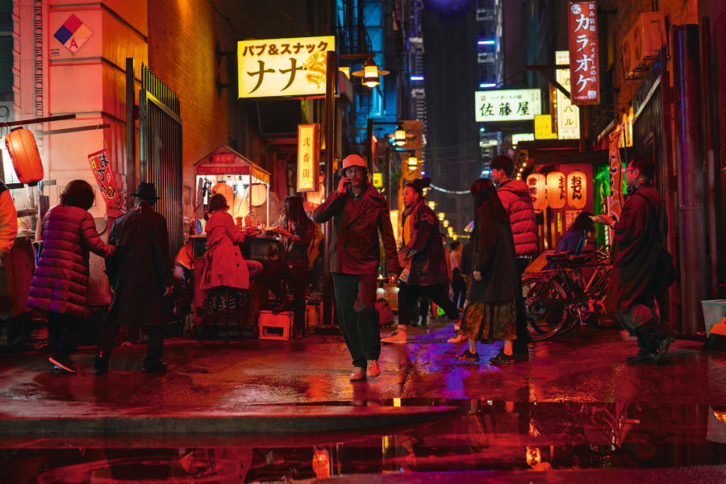
That’s just the sound of the interior of the bullet trains. Of course there are many literal sounds throughout the film but there are far more subjective and broad sounds. All of David’s films are fun and exciting but they are all very unique in their own way and in Bullet Train we really needed to be broad. The fights though brutal are always funny and there are all sorts of fun crazy sounds that either stand out like making the silent car fight an homage to a Hong Kong fight movie, to playing up the twangs and whooshes and almost comic sounds in just about every instance. The graphic violence needed to be pretty broad and stylistic so it didn’t take away from the comedy which was a main key component of this film.
What was the biggest challenge of the whole project?
The silent car fight was challenging because it deserved to be anything else but silent. It turned out to be far more satisfying to have zen music say “silent” and let the action rip! I’d be embarrassed to work on a David Leitch movie where the sounds didn’t live up to the brutal sonic physicality they deserve. Making that scene play like an over the top Hong Kong fight movie with all its broad whooshes, bone cracks and huge hits was most satisfying.
How much collaboration did you have with the director and the film editors?
Peter Devlin, the production sound mixer, recorded nice, clean tracks where all the dialogue sounded rich and full but it was important to have a very meticulous, detailed foley job to put back that reality not the least of which the train sets sounded like…. a set. During Covid we were not able to get on a real train yet were able to gather lots of props that give the train and its environs that feel of reality.
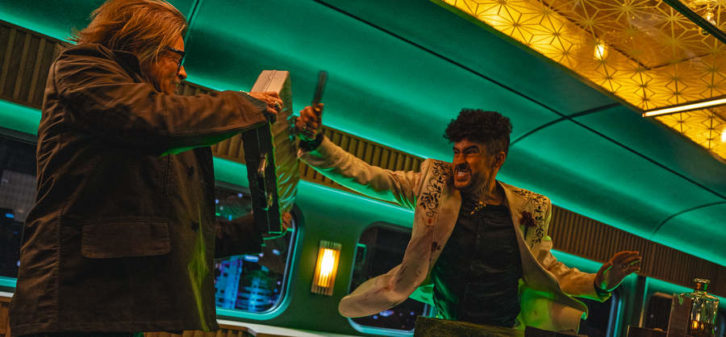
We had a great foley team in Sarah Jacobs, Robin Harlan and Nerses Gezalyian. I was able to spend a couple days making all sorts of sound effects for the fight scenes. Fight scenes are fun because when they shoot them the goal is orchestrate them so they play very real yet hopefully nobody gets hurt in the process. Our goal is make them sound like they do hurt as much as possible. A fun challenge.
We all spend a lot of time making all the editing as succinct as possible and feel that really helped maintain clarity in the frenetic scenes where sculpting and even cheating sync against dialogue was job #1. This happened in the edit and throughout the mix.
What are you most proud of achieving on Bullet Train?
David really wanted Bullet Train to be fun, funny and a ride (pun intended) and I feel that sonically we were able to achieve that. Sound in this film is clearly very visceral where necessary yet we were able to embed funny and then wink at ’80s action buddy movies, Hong Kong fight movies, Westerns, you name it. Elisabet Ronaldsdottir, the picture editor, created a great pacing and style that just lends itself to sound. The dialogue is an important part of the sound structure since it is such a key component of the pacing of the film. Jon Taylor did such a great mix with all those words and Dom Lewis’s score.

